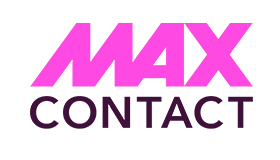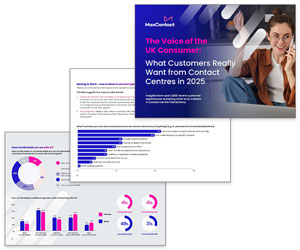Since March 2020, how many times have you heard ‘due to Covid, we can’t do x, y and z’ or ‘there’s a delay due to Covid’? More than a handful, we bet, and over a year on, the excuse is starting to wear thin.
Whilst Covid and its restrictions have seriously impacted people and businesses, UK consumers are fed up with brands STILL using Covid as an excuse for poor customer service.
A recent UK study of 10,000 people (by the UK Institute of Customer Service) showed that a quarter of us said organisations had used Covid as an excuse for poor service, including late deliveries.
Jo Causon, the institute’s Chief Executive, stated that the crisis has “exposed” a lack of proper investment in service.
Increasing consumer demand, skills and people shortages and lack of proper investment in tech infrastructure have added an immense amount of pressure for companies walking the tight rope of pleasing customers whilst dealing with issues behind the scenes.
And for what result? Complaints About customer service are at the Highest Level Since 2009.
In contrast to this, nearly a quarter of us have told a brand that we were happy with the service we received when we weren’t and well over half (55%) of us make excuses to end conversations with company representatives.
So, What’s Changed During the Pandemic?
During just two weeks during the pandemic, the average company in a Harvard Business Review study saw the percentage of calls scored as ‘difficult’ more than double from a typical level of 10% to more than 20%.
Issues related to the pandemic dramatically increased the level of customer emotion and anxiety in service calls, making a job that is hard for reps on a ‘normal’ day far more challenging. In addition to this, teams were battling tech issues and working from home.
The study showed ‘a massive uptick in instances of both customers and reps saying, “I can’t understand you,” and some companies in the study saw hold times balloon by as much as 34 percent and escalations (calls sent up the chain of command) skyrocket more than 68 percent’.
Where are Brands Going Wrong?
Covering Over the Cracks
If your business has not got the right technology or systems in place, hasn’t got all the answers for customers, is running on less employees than is needed, and asking your customer-facing teams to do ‘their best’ – you’re creating a recipe for disaster. It’s time to realise the need for proper investment in the right tech, tools and staffing levels for teams to do their job properly.
Processes That Help the Company, Not the Customer
‘Due to our process…’ is probably one of the most irritating lines any customer can hear, with it instantly coming across as a get-out clause for anything slightly tricky, especially when said process does nothing to help a customer.
Organisations shackle reps with standard customer-service policies (such as rules about extending bill payments) that pre-date the pandemic, and agents are often ‘powerless to help’.
A study found that low-performing reps were 27% more likely to hide behind policy on Covid-19 related calls than their higher-performing peers.
The moral of the story is to update processes for the world we live in, giving agents the flexibility to amend based on the circumstances and thus adopting a customer-first approach.
Exceptional Performance is an Employee Choice
Motivating employees to deliver exceptional performances is important – after all, it’s an employee choice. Providing a great environment and supporting teams in the right way unlocks the power of your people.
Measuring people for measurement’s sake could lead to unnecessary stress and very little benefit for your organisation.
One anonymous ex-contact centre worker shared their experiences of management, “You may have three calls ‘coached’ by management in a single session and if you fail your call coaching more than three times you are placed on a performance improvement programme; you could well find yourself on a PIP within the space of 30 minutes. And, you have 60 seconds to type up your notes (on all 13 systems), before your next call is automatically connected to you.”
Other workers described their experiences as lonely and stated that they were treated terribly “I hardly moved from my desk unless it’s during one of my allotted times, as an adult, it feels strange that you’re asking for permission to go to the toilet.”
It’s time organisations look at working practices and listen to employee feedback.
Evolve the Boring and Remove the Annoying
No one writes home (or on social media) about boring experiences. You have the option to go the extra mile – with relative ease – to create moments that might ‘wow’ your customers.
A wow moment is often as simple as showing thoughtfulness or perhaps surprising a customer in need – whether it’s a forgotten birthday, condolences or a cancelled holiday.
Agents might find this out on a call, and it offers a perfect opportunity to go above and beyond – perhaps you could organise an expedited delivery for the gift that never made it, or even order a bunch of flowers with a handwritten note.
Whilst you’re unable to solve your customers’ problems, you might be able to make their day a little better – and it won’t go unnoticed.
Giving your team the power to try it is the first step. Perhaps, they all get a small budget to use each month and the authority to make one moment happen a month.
This challenges your teams to understand your customers better, and don’t forget to share the team’s success to get them excited about what they can do for your customers.
Remove Friction From Customer Journeys
Customers simply want their experiences with contact centre agents to be low-effort and uncomplicated. The key to creating a frictionless customer journey is to first understand the journey and map it out.
According to research by Forrester, 95% of consumers use three or more channels in a single customer service interaction, with 62% using multiple devices.
This mass of channels and devices can easily create confusion for both agents and customers, so having an agile, robust contact centre software system in place is key.
After identifying customer journeys, you will then be able to rethink processes and workflows tailored to your customers’ needs. Once this is in place, continual testing and learning is key to keep truly putting customers first.
If the past 18 months has shown us anything, it’s that customers’ needs are constantly changing and so must the customer service that serves them.
This blog post has been re-published by kind permission of MaxContact – View the Original Article
For more information about MaxContact - visit the MaxContact Website
Call Centre Helper is not responsible for the content of these guest blog posts. The opinions expressed in this article are those of the author, and do not necessarily reflect those of Call Centre Helper.
Author: MaxContact
Published On: 2nd Aug 2021
Read more about - Guest Blogs, MaxContact






 MaxContact is the AI-powered customer engagement software that helps you turn every customer conversation into a high-impact, revenue-driving moment. We empower your teams to connect smarter, perform better, and scale faster – without losing the human touch.
MaxContact is the AI-powered customer engagement software that helps you turn every customer conversation into a high-impact, revenue-driving moment. We empower your teams to connect smarter, perform better, and scale faster – without losing the human touch. 
































